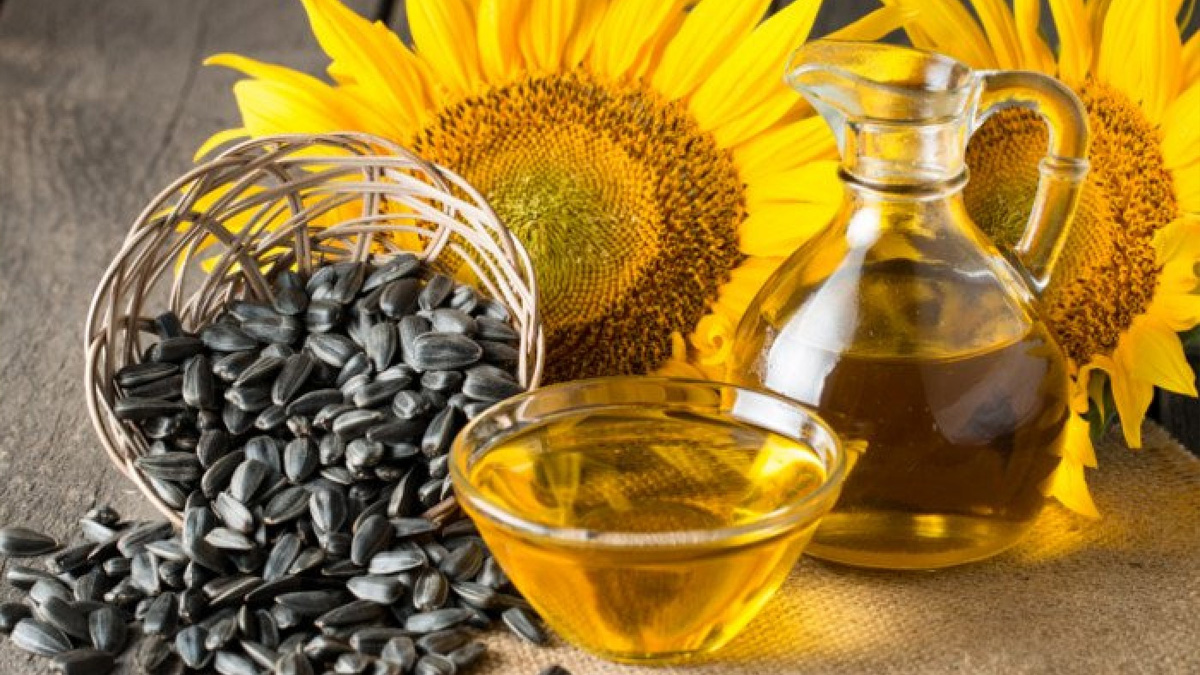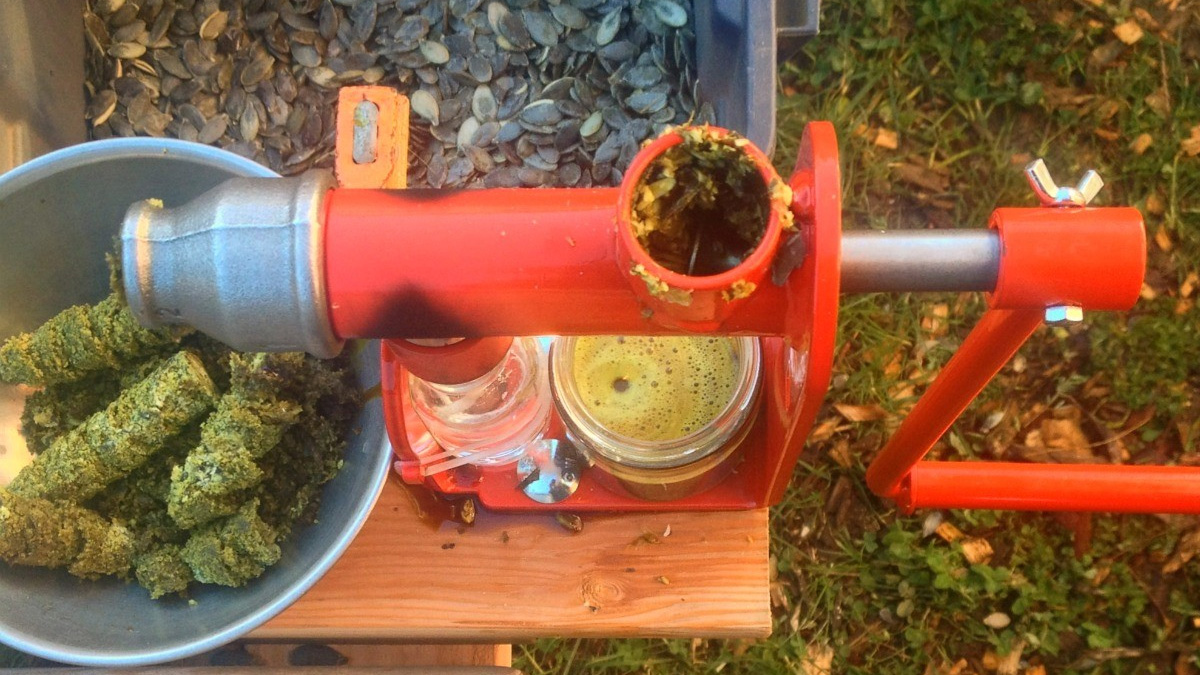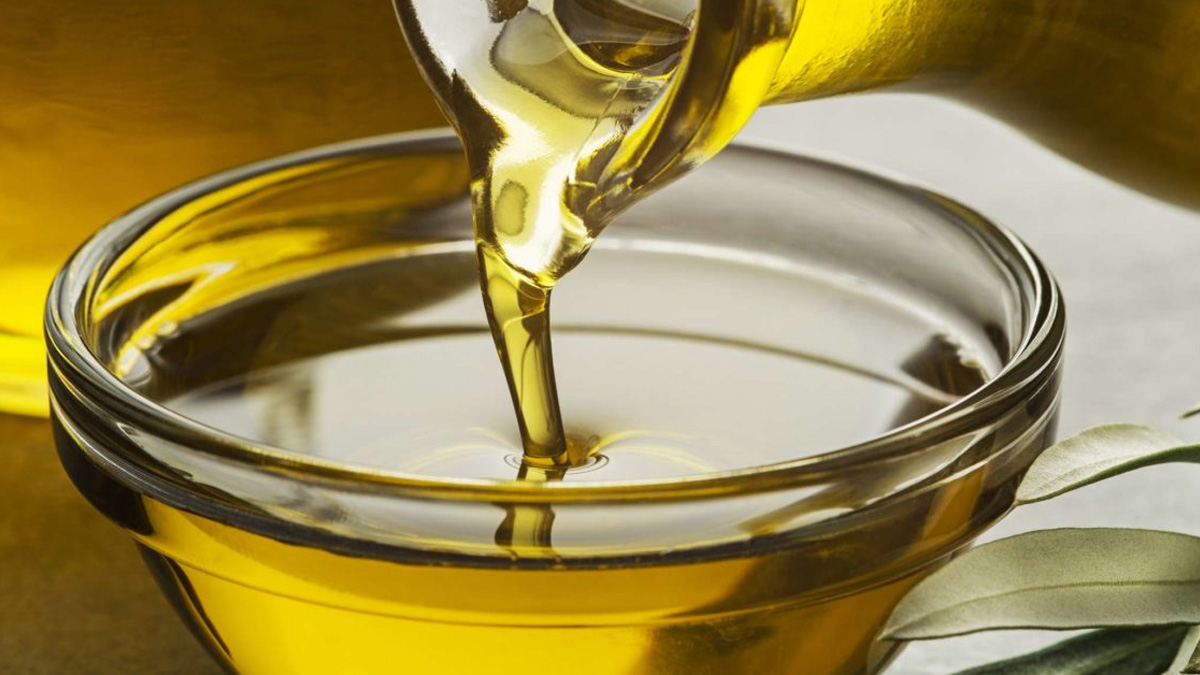on
Knowing how to make your own vegetable oil is a great skill to have in case a catastrophic event occurs. If you want to make soap, cooking oil, candles, or body oils from scratch, retrieving the oil is step one. This is actually a fun process if you like working with your hands and doesn’t require much in the way of equipment.
Getting Started with Vegetable Oil
The first thing that you need to do is decide what type of oil you’d like to use. The entire world of nuts and seeds (that grow in your climate) is at your disposal but some are better than others. It also depends upon what you want to use it for.

If you’re shooting for an inexpensive, all-purpose oil that is easy to grow just about anywhere, sunflower seeds are probably your best bet. There are two different kinds of sunflower seeds – the ones you eat (confectionary) and the ones used for bird seed (black oil). The black oil seeds produce twice the oil as the confectionary type. You get about a quart of oil from a 2-liter bottle of seeds. Plus you can feed the left overs to your chickens and goats as a high protein treat.
The most cost-efficient way to use the seeds that you buy is to plant them and grow an entire crop of sunflowers instead of just using them directly for oil. Sunflowers are easy to grow; they don’t require much space or water to thrive and if you save some seeds back, you’ll never have to buy another bag.
Once the heads sag and the petals fall off at the end of the season, you’ll know that they’re ready to harvest. Lop off the head and hang it up to dry. Then just rub the seeds out with a piece of durable cloth. Easy.
If you’d rather use other nuts or seeds, here are some yields per quart of oil:
- Walnuts – 2.9 pounds
- Hazelnuts – 3.6 pounds
- Peanuts – 4.6 pounds
- Pumpkin and sunflower – 5.3 pounds
Remember that though you may get a lesser yield from pumpkin and sunflower seeds, they’re dirt cheap and a piece of cake to grow compared to nuts! You can get “naked” pumpkin seed varieties that have little to no hull. The leftovers can be fed to your livestock and so can the rest of the pumpkin if you aren’t of a mind to eat them all.
Feel free to experiment with different seeds. The yield may not be high, but each type of oil has it’s own flavor and it could be that cucumber seed will make the perfect vinaigrette for your taste..
Making Oil
Oil presses used to be extremely expensive, but you can get small ones that will do just fine for home production for about $150. If you buy used, you can get them even cheaper and they’ll last forever. The Dutch brand Piteba is the most commonly used oil expeller and it is available from a variety of retailers on-line.

You can even make your own. They’re simple pieces of machinery that have a funnel for you to put the seeds in, a crank that you use to push the seeds through the extractor, a heating section that heats the oil, an exit for the oil, and an exit for the pulp. That’s it.
It’s important to clean your press well after you use it though because oils go rancid quickly and you don’t want to ruin a fresh batch.
The process is simple.
- Set up your machine.
- Fill the heating unit with the recommended flammable and light.
- Allow it to heat – this takes about 10 minutes.
- Pour your seeds into the hopper.
- Crank until your arms feel like the are going to fall off – it takes about 20 minutes to make 14 ounces of oil. That’s about a 2-liter bottle full of seeds.
- Remove your container of fresh oil and cap tightly.
- Clean your machine.
- Your oil will be black, assuming you’re using black oil sunflower seeds. Once it sets for a few days, the sediment will settle to the bottom.
- Siphon off the oil and discard the sediment.
- Store for up to 2 years in a tightly-sealed container in a cool, dry place.
Different oils have different shelf lives but for the most part, seed and nut oils are good for at least a year, and often 2-3. If the oil is rancid, it will change colors and smell off. The taste won’t be pleasant, either.
That’s all there is to making vegetable oil. You now have a high-quality product to cook with or to use as a base for soap, candles, lamp or bio-fuel or body oils.
Get access to premium content and more!





